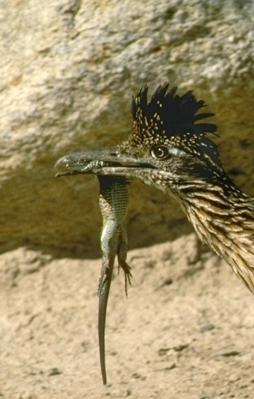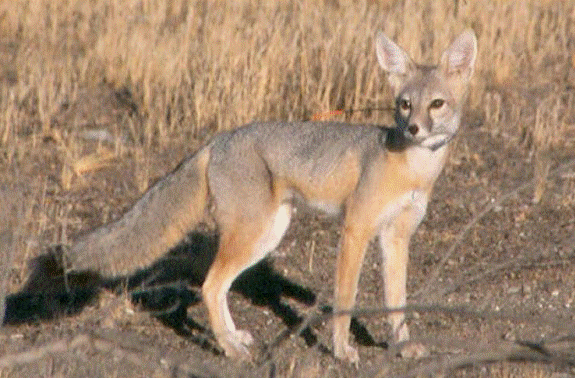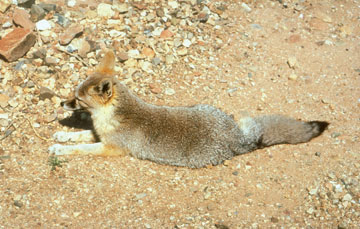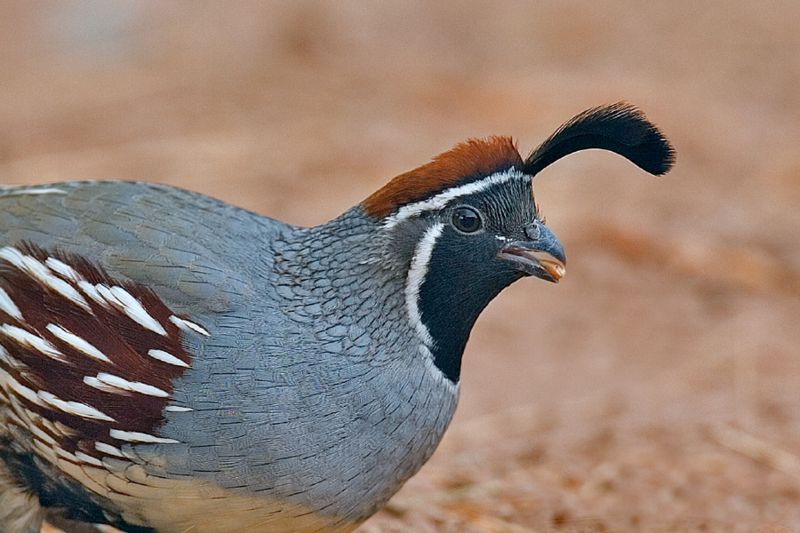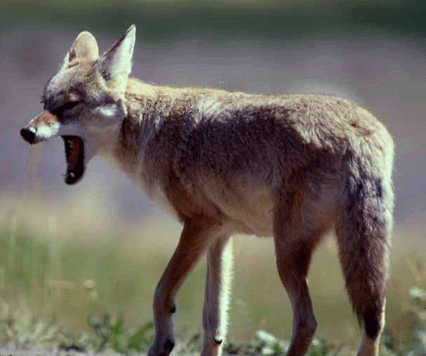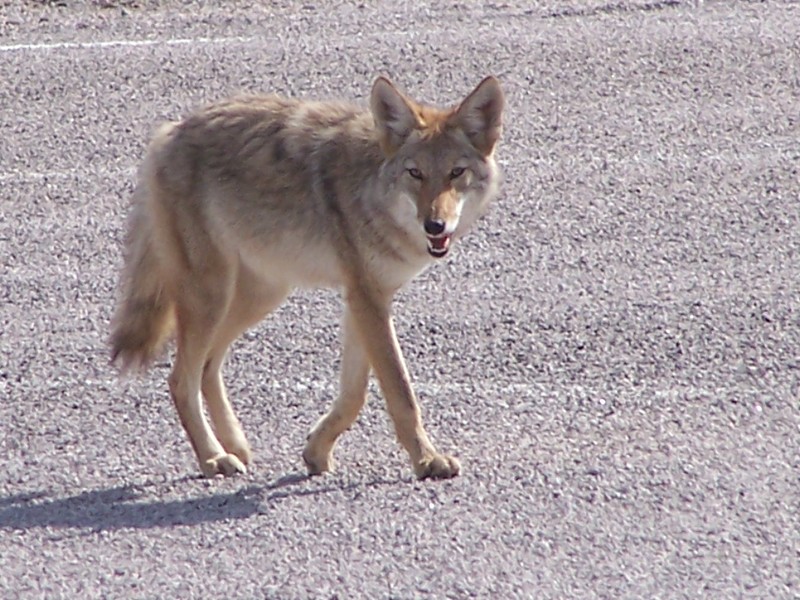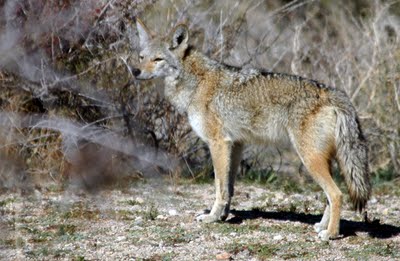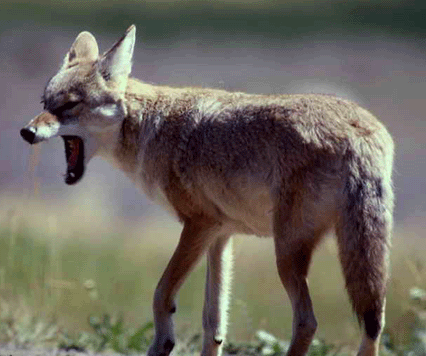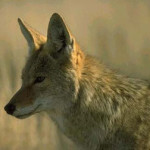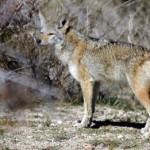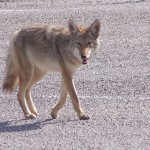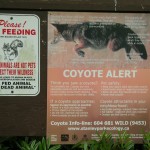Greater Roadrunner – A member of the cuckoo family, the greater Roadrunner (Geococcyz californianus) is zygodactylous or two toes pointing forward and two backwards. It has heavily streaked plumage, a bristly crest, short rounded wings an upward tilted tail, and long legs. It rarely flies and has been clocked running at speeds up to 17 miles per hour. It is said to have gotten its name in the Old West from running ahead of horse-drawn carriages. Its diet of lizards, insects and spiders, small rodents, birds, and snakes is supplemented with occasional fruits and seeds.
Tarantula Spiders
Tarantula – These spiders have hairy,brown to black bodies, and a leg span that can exceed 4 inches. Despite their intimidating appearance, they are generally non-aggressive and will avoid confrontation if possible. north American desert tarantulas do have venom, but the effect on a human is generally equivalent to a bee sting.
For most of the year tarantulas are solitary creatures that seldom move far from their burrows to hunt lizards, insects and other arthropods. They are most likely to be seen on summer nights when males are out and about searching for mates. The mortality rate for mature males is high. Those who manage to survive the search for a female will most likely be eaten by her soon after mating. Females, who tend to stick close to the home burrow, may live for 20 years or more.
Photo Gallery:
Desert Kit Fox – kit fox
Desert Kit Fox (Vulpes macrotis) – The smallest of foxes, the Desert Kit fox is about 30 inches from nose to tip of tail. It has very large ears and is gray and buff colored with a black-tipped tail. The bottoms of its fee are covered with fur to faciltate travel on sandy soil. Mostly nocturnal, the fox hunts rodents, lizards, birds, and insects. (the ocasional house cat).
Habitat -Likes open desert, on cresote bush flats, and amongst sand dunes if any. The Kit Fox is almost exclusively carnivorous. They are will adapted to desert living seldom needing water to drink. They get most their water from the food they eat, dining mostly on the Merriam’s kangaroo rat. They also like jack rabbits and desert cottontails. Kit foxes are active at night and stay in dens during the heat of the day.
 Note: It is rare to see one of these guys along the trail, but they are out there. The only one I have seen was a road kill, I wore his tail on my hiking hat for awhile.
Â
Gambel’s Quail
Gambel’s Quail – (Callipepla gambelii) have plump, stocky bodies, rounded wings, and prominent head plumes. The name Callipepla comes from the Greek kalli ( beautiful) and peplos (robe). The body is gray above and buff below, with streaked sides. Males have a black face and throat and a white headband.
These birds spend most of their time on the ground, often near washes and springs. At night they roost in low branches of shrubs or trees. They are generally gregarious and form coveys of 20 or more in fall and winter.
 These Quail can be seen along the trail early mornings if one is quiet. Located in washes and areas where water can be found. They are fun to watch and they have a series of calls they make to each other.
COYOTES
Nov. 16, 2009 – Coyotes – (Canis latrans) are grizzled gray or reddish-gray with buff underparts a bushy tail with a black tip, and prominent ears. They are excellent runners, with cruising speeds of 25 to 35 miles per hour and short bursts of up to 40 miles per hour.
Extremely intelligent and adaptable, the coyote is expanding its range despite loss of traditional habitat and human hunting pressures. Today the coyote can be found in desert, grassland, mountain and suburban environments as far north as Alaska and as far south as Central America.
The coyote is an opportunistic hunter employing a variety of methods to obtain food. It patiently stalks and pounces on small mammals. It has trememdous endurance and can simply chase prey until it is worn out. Where the food supply is predominantly small animals, it hunts alone or in breeding pairs, while in the presence of large prey such as deer, it will hunt in packs. Coyotes will also make do with insects, lizards, carrion, fruit, and even pine nuts (grass seeds).
Coyotes are usually heard between dusk and dawn. Barks and yelps followed by drawn-out howls serve to announce location, strenghten social bonds, and reunite separated members of a band.
NOTE: The above definition of coyotes comes from a Nevada Bureau of Mines and Geology Special Publication called “Geologic tours in the Las Vegas Area”.
NO DUMPING….?
Â
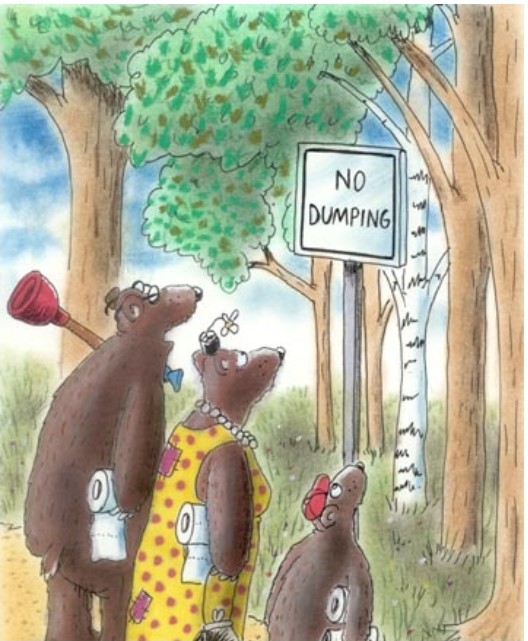
"No Dumping" says it all....?
Nov. 16, 2009 – Cartoon says it all…..It is what it is…!  We in the trail business do have a sense of humor, sometimes. To bad dogs can’t read, because dog owners sure can’t. On a recent hike to pick up trash along the trail from a trail head all I found was piles and piles of dog crap along the trail. The responsible dog owner picks up after his dog then dumps it in a trash can at the trail head.  “Pack it in…Pack it out!”   There is another cartoon out there from the “Far-Side” I think….shows a bear putting a sewer pipe from the woods/forrest through a side window into a house and giving the signal to the pipeline operator(another bear) to turn it on…
Then there is the dog owner who picks up his dogs business in a bag (thank you); but then leaves it along side the trail???@#@#$ Why?   Or how about the 16oz soda cup or Grande Starbucks cup found sitting 1-mile in from the trail head? You drank it walking here when it was full and heavy, why not cary it back light and empty? “Leave No Trace” that you were here .
Â
Wildlife – Brown Tarantula on Trail Saturday
Oct. 24, 2009 – While doing our trail watch hours on the trail Saturday we got to see a fair sized ” Brown Tarantula” on the trail. We watched him for a while and made sure he go off the trail before heading back to the trailhead. The sighting took place near MM 13 on the River Mountains Loop Trail within Lake Mead National Recreation Area.
Here is a couple of photos:
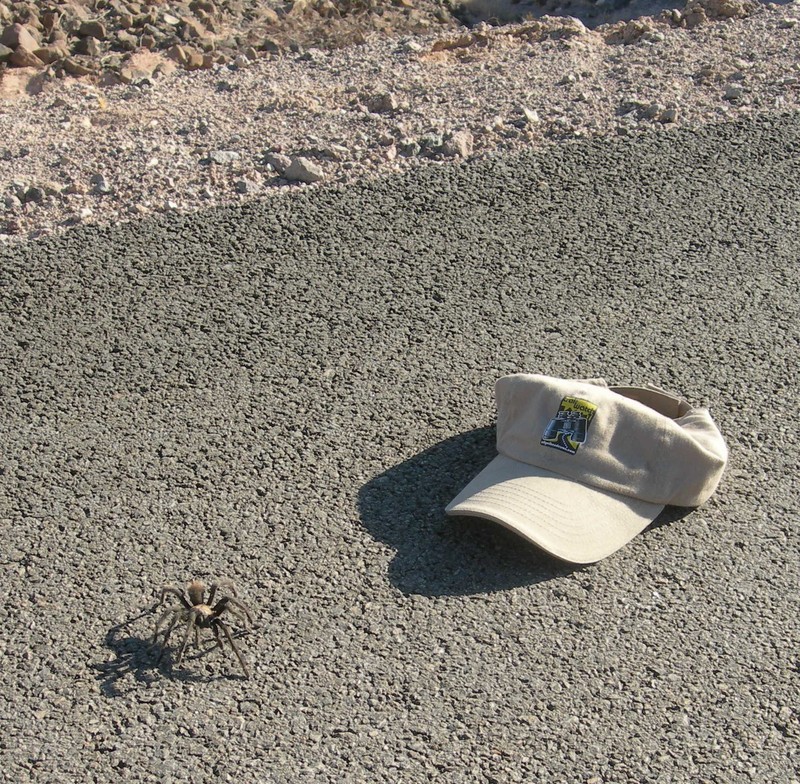
Tarantula & Trail Watch hat photo by John 102409
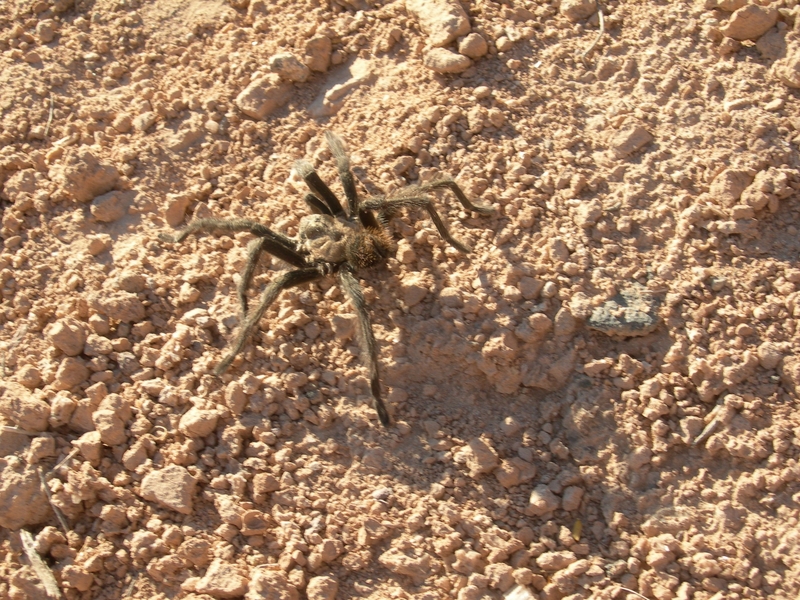
Big Horn Sheep near trail at risk?
 OCTOBER 12, 2009 – I have received many searches for Big Horn Sheep. This recent article by Jean Norman along with related photos really provides some great insight to the some of the issues these big boys face on a daily basis. I personally prefer to see them out more in the wilds along the trail which is a rare sight indeed. This park location where the sheep are photographed is only a block off the trail so one can make a quick side trip while riding trail through Boulder City.  The park is located off of Ville Drive and is called the “Hemenway Valley Park”.Â
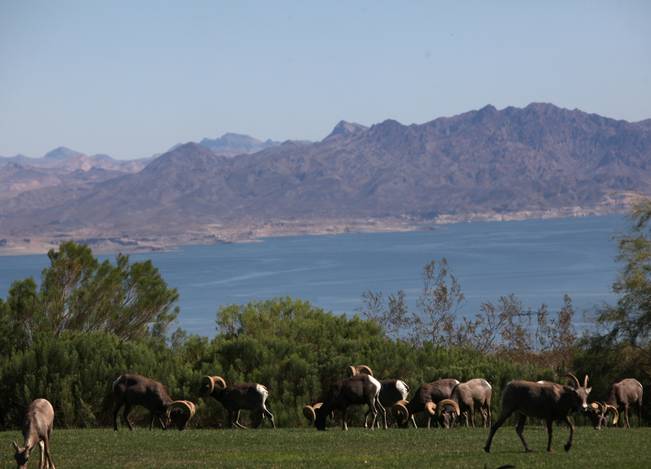
Photo by L.V. Sun Justin M. Bowen
Story by Jean Norman, L.V. Sun & B.C. News
The desert bighorn sheep that live in the River Mountains in Boulder City, seen here on a recent weekday morning, make their way down to Hemenway Park almost every morning. City officials have voiced concerns about the sheep as traffic in the area they roam is set to increase next year with the opening of the new Hoover Dam bypass bridge.
Link to entire article with lots of sheep photos below.
http://www.lasvegassun.com/news/2009/oct/05/when-bypass-bridge-opens-bighorn-sheep-could-be-bi/
WARNING: Coyote Alert Along Trail Continues
October 23, 2009 – We have another alert!
This past weekend two different reports were received by bicyclist about being chased by a large coyote near the southeast corner of the SNWA Water Treatment plant (mile marker 3.5 to 4.0). This is where the trail takes a sharp 90 degree turn. Henderson Animal control and Nevada Wildlife have been notified. In order to pinpoint this “one” bad apple coyote we need more reports detailing where, date, and time. DO NOT go looking for this guy, but if seen or you encounter an aggressive coyote along the trail please report it. Numbers are list below. Also please call Trail Watch at 702-267-4050 and provide above information.
NPS Coyote file photo 2009
Here is what is posted on City of Henderson Animal Control website:
 Urban Wildlife including coyotes should be handled by the Nevada Division of Wildlife, but they seldom are able to respond due to staff and budget shortages. Animal Control does not handle wildlife unless the animals become a Public Safety issue. If a coyote or coyotes are causing an immediate threat to citizens of Henderson, please call Henderson Animal Control at 702-267-4970 ext. 4 during our normal working hours. After hours if there is a life threatening human emergency, please call 911 for a Police/Animal Control response. Coyotes are common throughout Henderson and are seen most frequently at early evening, night and early morning hours cruising through various neighborhoods. Please keep your cats and small dogs indoors! Coyotes will usually leave by themselves unless they are challenged or cornered. For additional general information, please contact Animal Damage Control at 702-668-4565.
Here are some safety tips regarding coyotes:
- DO NOT FEED COYOTES!
- DO NOT LEAVE PET FOOD OUT WHERE COYOTES CAN FIND IT!
- DO NOT LEAVE GARBAGE OUTDOORS OVER NIGHT IN OPEN CONTAINERS…PUT A LID ON IT!
- KEEP DOGS ON SHORT LEASH WHEN WALKING! (A leash is required when walking the trail)
- SCARE COYOTES OFF WHEN SEEN OR ENCOUNTERED!
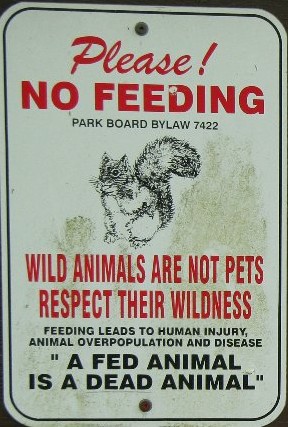
Coyote photo gallery:
- Coyote Howling file photo 2009
- Coyote file photo 2009
- Coyote in wild file photo 2009
- Coyote NPS file photo 2009
- Unknown sign Coyotes Do not Feed
Snakes of the River Mountains
Are there snakes on the trail? What type of snakes do you have here? YES…we have snakes in the River Mountains…and along the trail and even on the trail from time to time. We have Rattlesnakes, several varieties such as Western Diamondback, the Southwest Speckled and the Sidewinder. You see Gopher snakes, lizards, and horny toads, too. You’ll see the snakes early morning and early evening to dark. Rattlesnakes usually give you plenty of warning….just back away and leave them alone.Â
One day last fall while picking up trash along the trail with my grippers, up near the powerlines at Railroad Pass, I almost stepped on a rattlesnake. I think he was a Speckled about 30″ long. Needless to say that piece of trash is still there today. And yes, it gave me warning, but not as much as I would have liked. Â
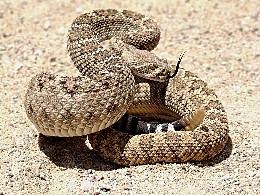
Western Diamondback
Â
Â
